We will cover the typical reasons why your robot is not moving at all.
- #369
- 15 Feb 2017
- 2:23
Wrong port
By default your motors must be connected to ports B and C. So if your robot is not moving, the first place you must look at is the ports. Do the cable connections correspond to the ports selected on the move block in the programming software?
Cable is not reliably connected
You must push the cable up until a "click" sound is heard. So, if the ports are correct, check the cable connections in the ports.
A way to demonstrate to someone that the cable is not reliably connected is to shake the robot and the cable will come out of the port.
English
This here is our program for moving forward but sometimes the connection between the cable and the robot might not be good enough and the program won't work. So, let's stop and discuss this program.
In the program we've configured the two ports for our robot to be B and C. And now the program works. The robot moves forward. But if we just move this cable not to port C but to port D and start the same program you see that the whole robot does not move. And the diode here is blinking. This happens because the robot is trying to direct both motors to move forward and there is no motor on port C. And because there is no motor the brick detects that there is no motor cannot get some feedback from the motor and it just stops. So, what you should do now if you see this screen and this blink you just press on back to stop the program. It might be possible that the port is correct but when connecting the cable you have not pushed the cable.
So, you've not heard the click. This is the click. But sometimes you can just add the cable like this, start the program, it'll work but because you've not clicked while working the cable will move.
It's difficult to replicate it because these are good cables but it happens many times in the classroom like this. You see, it seems that the cable is connected but it's not connected and the whole program does not work.
Courses and lessons with this Tutorial
This Tutorial is used in the following courses and lessons
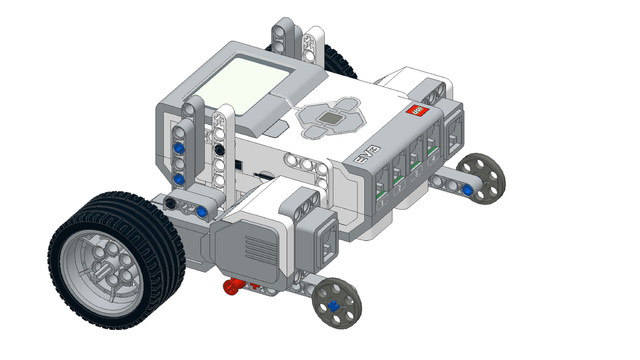
EV3 Phi. Introduction to robotics with LEGO Mindstorms
The things that you will be able to do with your EV3 robot by the end of this course are:
Freely move your robot towards desired target;
Avoid obstacles on the path of your robot using sensors;
Follow lines of any shape;
Detecting and picking up objects of any kind;
- 92
- 220:20
- 36

First challenge - Yo Yo task
Overview of what is going to happen that part of the lessons.
- 14
- 0
- 4
- 3d_rotation 0
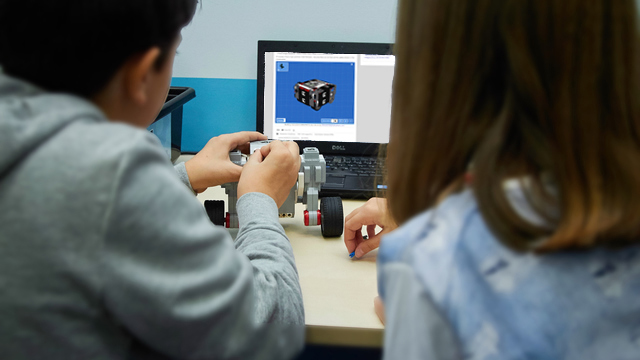
Instructors Remote Training
If you are working with students and you want to introduce Robotics to your class or you want to mentor a FLL team, but you are insecure about your technical knowledge in the Robotics field, then this is the right place for you. Having in mind teachers' busy schedule, we have design two different schedules and added an option to design one just for you. FLLCasts's Mindstorms EV3 Robotics Online Training is the perfect match for any teacher.
After the completion of each task the participant has to upload his solution for verification.
- 183
- 280:11
- 156

How to make the robot move
Let's review the LEGO Mindstorms EV3 Intelligent Brick
The EV3 brick is the main computer of your LEGO robot and it has a display, a few buttons and various ports.
- 24
- 0
- 11
- 3d_rotation 0
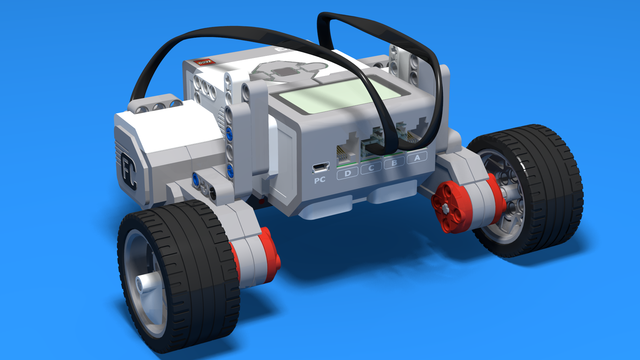
Robotics with LEGO - Level 1.0 - Adventure in Space
The first level of the Robotics with LEGO curriculum for students in fifth to twelfth grades.
Various constructions with robots are built. Learn how to control the motors so that the robot navigates around the Moon and Earth in various ways. Getting to know the first two sensors. The robot can feel its surroundings with the help of the Touch sensor and avoid obstacles.
The Ultrasonic distance sensor can help the robot avoid obstacles. Students work with concepts like loop, degrees and medium motor. Robots can now do two different actions at the same time - while solving missions on a field, the third motor clears detected obstacles.
- 126
- 123:52
- 150
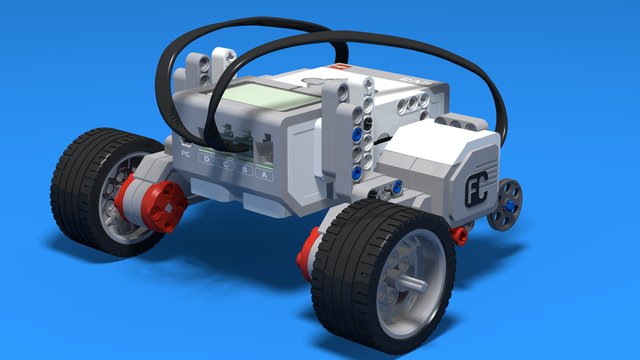
Lesson 1 - Moving like a Yo-Yo
Introduction
Today, you will get to know your classmates and your teacher, learn how the lessons are conducted, construct your first robot, and learn how to program it to move. The end goal of this lesson is to make the robot move like a Yo-Yo. How does a Yo-Yo move?

If you have ever owned a Yo-Yo, you know that it's meant to fall down and rise back up to your hand. But in order for it to move successfully, we need to move our arm in such a way that we provide it with the required velocity. Otherwise, it will decrease the distance on the way back up on each drop until it stops.
Try to make a good impression on the rest of your class, because you will be doing this course with them until the end.
- 19
- 4
- 9
- 3d_rotation 1

Level A1. Introduction. Robotics with LEGO
Introduction to robotics - The first level of the Robotics with LEGO curriculum for students in second, third or fourth grades. A journey in space, with robots. Various constructions with robots are built. Learn how to control the motors so that the robot navigates around the Sun, the Moon and Earth in various ways. Getting to know the first of the sensors. The robot can feel its surroundings with the help of the Touch sensor and avoid obstacles.
- 142
- 133:42
- 187

Lesson 1 - Moving forward
Your LEGO sets and the workplaces must be in exemplary shape. Beyond that, you must do one more thing.
- 12
- 5
- 8
- 3d_rotation 1
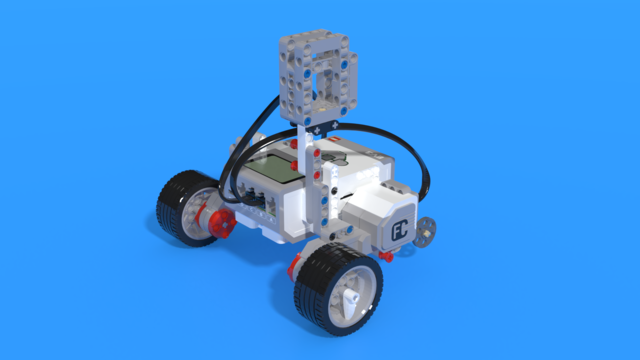
Python with LEGO Mindstorms EV3 - Level 1
The course introduces students to the programming language Python. We use LEGO Mindstorms EV3 Robots. Python is a popular programming language. It could be used for introducing students to programming, for academic studies, for developing machine learning algorithms and as a general-purpose language.
During the course, students learn how to read and how to develop Python programs. They use an Integrated Development Environment called Visual Studio Code. Robots are programmed to perform interesting and funny tasks like "bringing you water". The level ends with competition on a playing field with boxes.
- 74
- 28:18
- 114

Lesson 1 - Beverage Assistant
Introduction
Anyone who decides to develop themselves in the field of robotics does so because they have been dazzled by the possibilities of automation in everyday life.
Whether you wish to build a multitude of small robots that work together to make your life easier or a big humanoid robot that does your homework for you, you have also come here to create your own robots.
In order to create complex robots, we first need to build simpler ones but this does not mean that they cannot be functional. "Paalia Technology" is one of the companies that began manufacturing and selling robots that are programmed to be waiters and today we will make a simple robot that serves tables today.
For most of us, these are the first steps into robotics, which is why we will start with a simple platter robot that moves to a specific location and returns.
In every lesson, we will learn how to make increasingly more complex robots and you will be able to automate more aspects of your life.

- 14
- 4
- 6
- 3d_rotation 1
![Image for [In Development] The fun level - Game-oriented introduction to LEGO robotics](https://d2nmr6p48f8xwg.cloudfront.net/content_pictures/pictures/000/002/636/a4f229bae5979562f6bfe32adc6281e577e312674a0cc5c98f8fdfe15e7c7da9b89f826a037575a5LEGO-Mindstorms-Ev3-Yolanda-Sailship-Robot-Fllcasts.png)
[In Development] The fun level - Game-oriented introduction to LEGO robotics
A level, designed for introduction in LEGO-robotics, focused mostly on games. We use goal-oriented challenges to make the students want to accomplish a certain task, learning a lot in the process. Some of the games we have included here are football, bowling, paper-plane competition and many more. It is suitable for studens 8 to 12 years old, but even older students will have a lot of fun with the activities.
This is a brand new course that we are experimenting with in a groups in June 2019. Keep in mind that it is possible to use it for summer camps and groups, but there are a few lessons that will be improved on the fly.
- 38
- 42:14
- 40
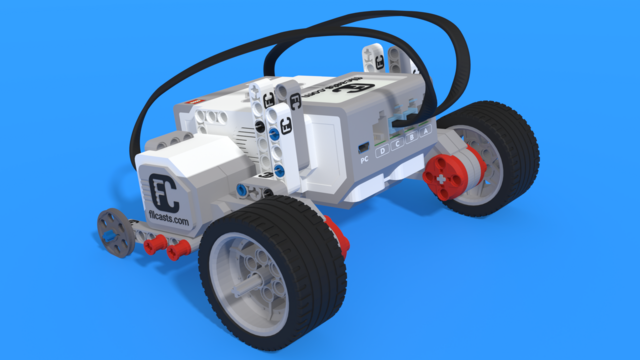
Lesson 1 - Introduction
Introduction
Today the robot we are building is a spaceship once again. The aim for today, however, is exact - to reach the further (dark) side of the moon!
Where is located the dark side? Why is it so hard to be reached? Why is it called "dark"?
- 23
- 3
- 15
- 3d_rotation 1